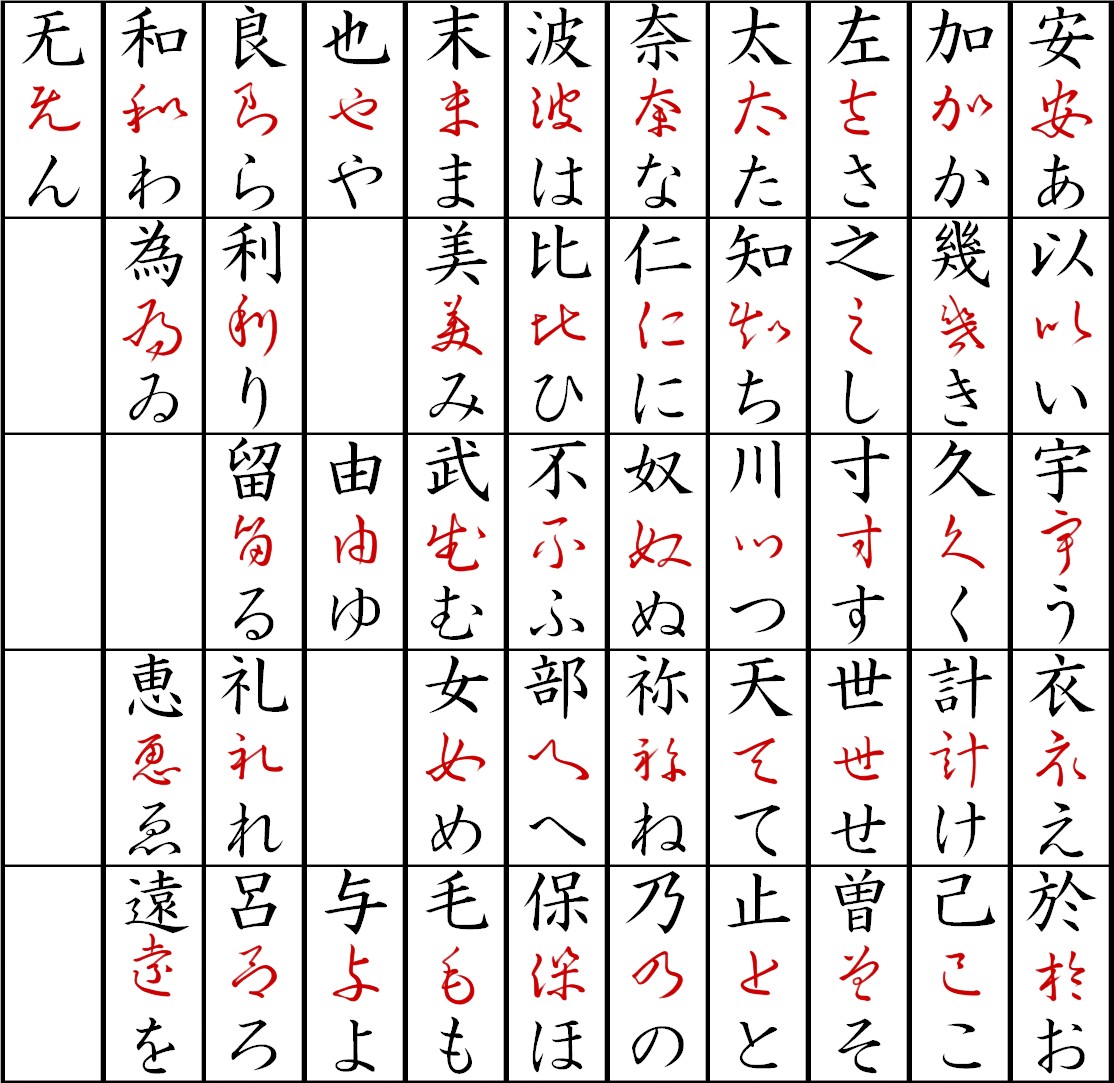
How we read ancient Chinese
As I previously stated, Japanese high school students study ancient Chinese literature and poetry, but the grammars of both languages differ greatly from one another. So, how do we read it? We read ancient Chinese text by adding phonetic transcriptions in hiragana and compensate for the lack of postpositional particles, etc. by adding them in katakana to the right of the sentences, and by numbering and symbolizing the word order on the left.
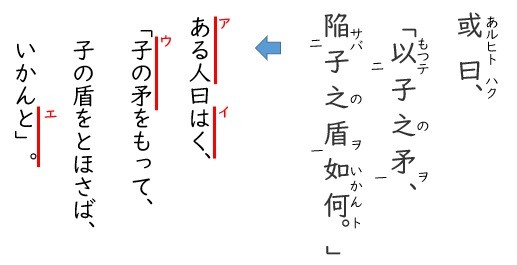
This man said, "What happens if you pierce your shield with your spear."
The numbers "一" and "二" indicate the order to read phrase.
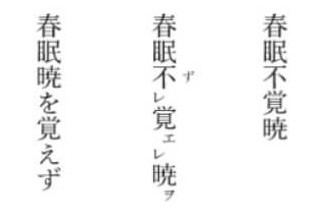
In spring, one sleeps a sleep that knows no dawn.
The right sentence is Chinese: "春 (spring)" - "眠 (sleep)" - "不 (not)" - "覚 (know)" - "暁 (dawn)". You can see how similar it is to English. The symbol "レ" in the center sentence indicates that one is to read the characters backwards one by one. We read the latter half completely inversely. The left sentence shows how we Japanese actually read.
People didn't have recording technology back then, let alone YouTube, most Japanese people had never heard the sound of the Chinese language. However, they struggled to read Chinese and developed a method for reading it as if it were Japanese.
The origin of hiragana and katakana
In addition to kanji (Chinese characters), Japanese has two sets of characters: hiragana and katakana. Where are they from? They're actually derived from kanji. The ancient Japanese had their own language but no letters, so they used kanji not only as ideograms but also as phonograms; they ignored the meaning of each kanji in order to represent Japanese sounds. They're called manyo-gana. The image below shows how manyo-gana transformed into hiragana. They evolved gradually into their present simple cursive form, and it took over two or three hundred years to become roughly the same shapes we see today. Hiragana was used primarily by women to write diaries, literature, and poems.
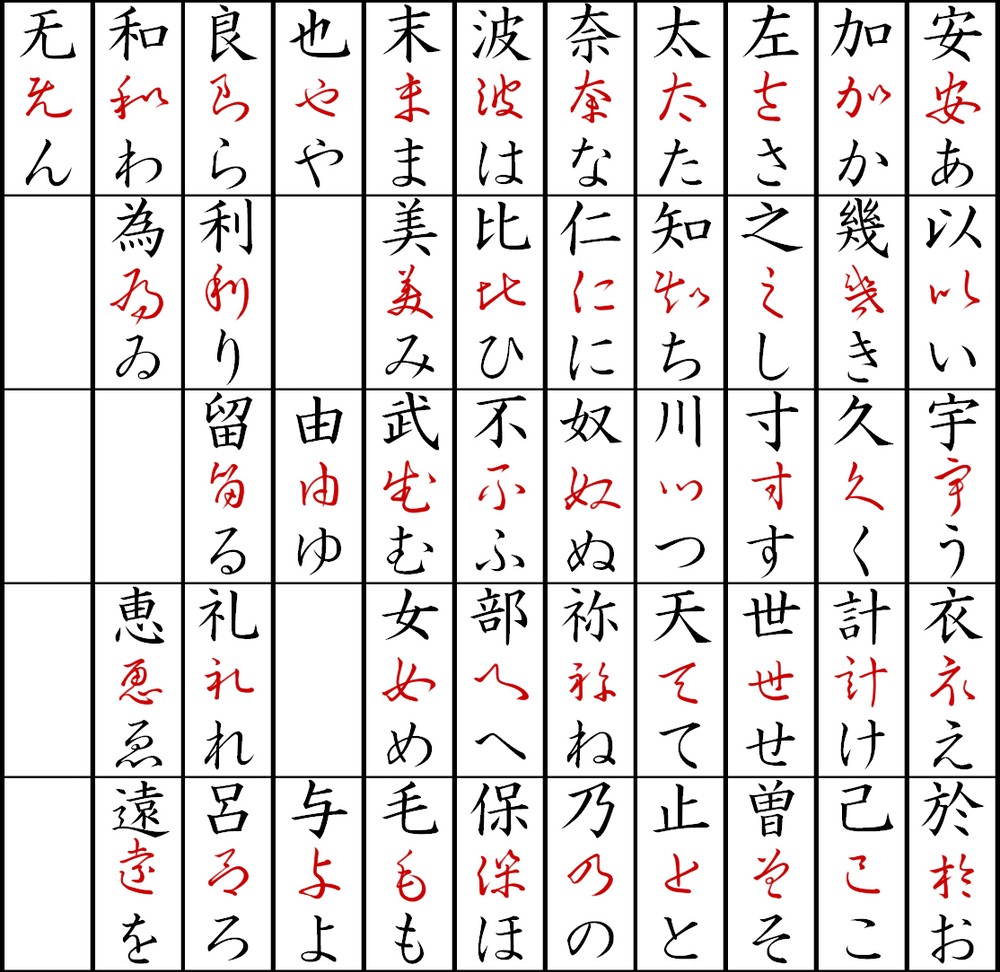
Katakana, on the other hand, is more linear than hiragana and is a component of manyo-gana. We could say that katakana is a more artificial character than hiragana, and its establishment most likely happened quickly. They were used in the legal and administrative domains by men when they were created. Which manyo-gana component is used in each katakana is depicted in the image below.
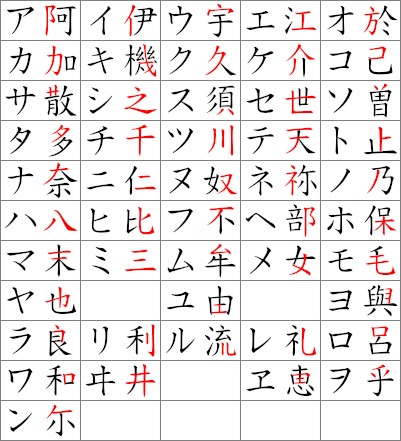
Nowadays, they're mainly used for writing loanwords.
Fake Chinese
As we've seen, Japanese, especially as a written language, has been greatly influenced by Chinese. So, it's not difficult for us to communicate using only kanji. The image below is a chat between a couple, which went viral around 2009. They were playing a game where they communicated in "fake Chinese". This game has been popular among Japanese since then. For us, it's funny because reading it is a piece of cake though it appears to be Chinese at first glance.
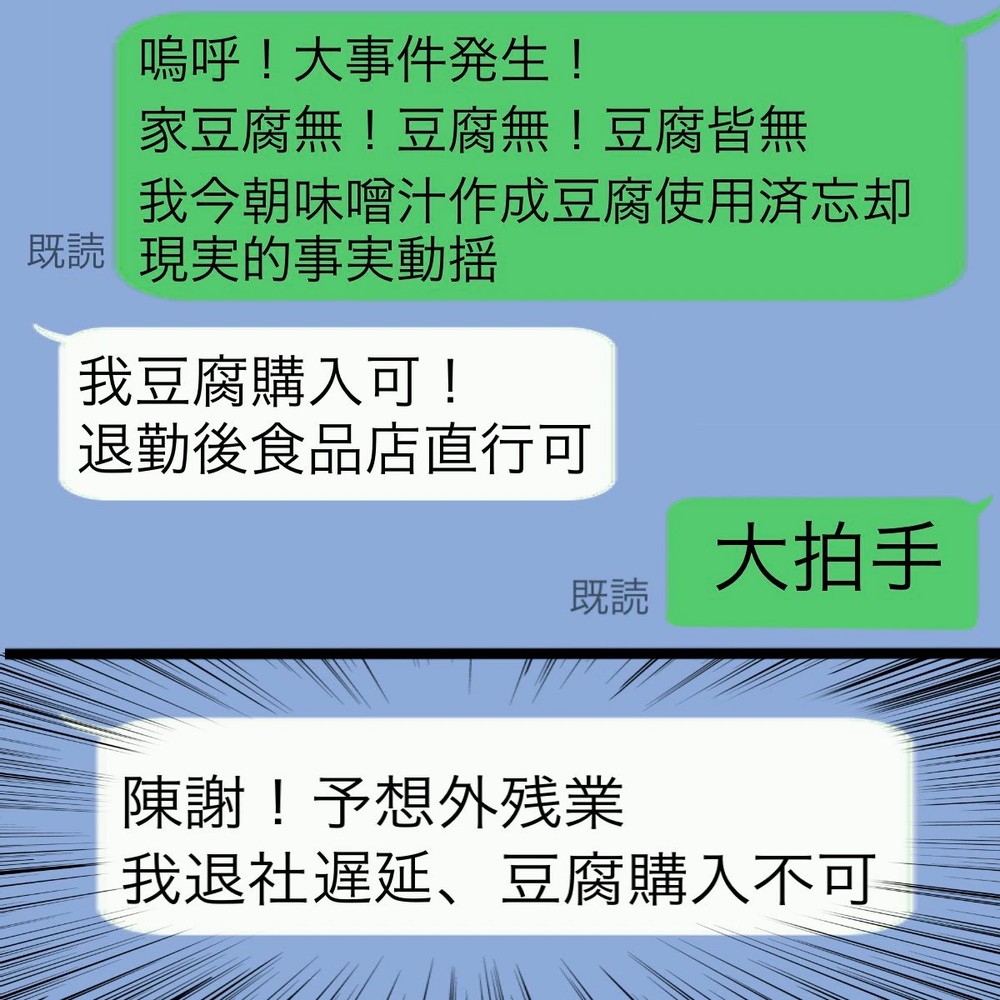
Green: Oh! I'm in big trouble! I ran out of tofu! I have no tofu! No tofu at all! I forgot that I used all of tofu to make miso soup this morning! I'm really shocked with the fact!
White: I can purchase tofu! I'll be able to stop by the supermarket after work.
Green: Great!
White: I'm so sorry! I have to work overtime, which I didn't expect. I can't finish my work on time, so I won't be able to get tofu.
To create fake Chinese, we first write as much kanji as possible, then we change the order, and finally we add some auxiliary verbs (可 = can) or negative adverbs (不 = not). Fake Chinese has been increasing online and recently, the Chinese also started enjoying it and have even helped us refine it. Some Chinese say that it's surprisingly similar to their ancient language.
While writing my posts about Chinese and Japanese, my interest in the Chinese language has grown. Although it's tough for me to find the time to learn any languages other than English, I may learn some Chinese one day, if only to be able to read it.
title: The Chinese and Japanese Languages
How interesting. All these years, I had no idea that the hiragana actually evolved from common characters like beauty, heaven, woman, and peace. Fascinating!
Yes, they're み mi, て te, め me, わ wa, respectively. By learning English, I'm now able to objectify my native language, and my interest in language in general increased. Thank you for your very informative feedback as always, Uly!
Fake Chinese のことを初めて知りました。おもしろいですね!漢字から文脈を判断しながら脳内で助詞を追加し、さらには時制まで整えている自分に驚きました :D
@Aki_ 感謝書込。偽中国語一瞬見困難実際読簡単。
すごーーーーい :D
@Aki_ 謝謝 :D(これは私が知ってる数少ない本物の中国語です!)